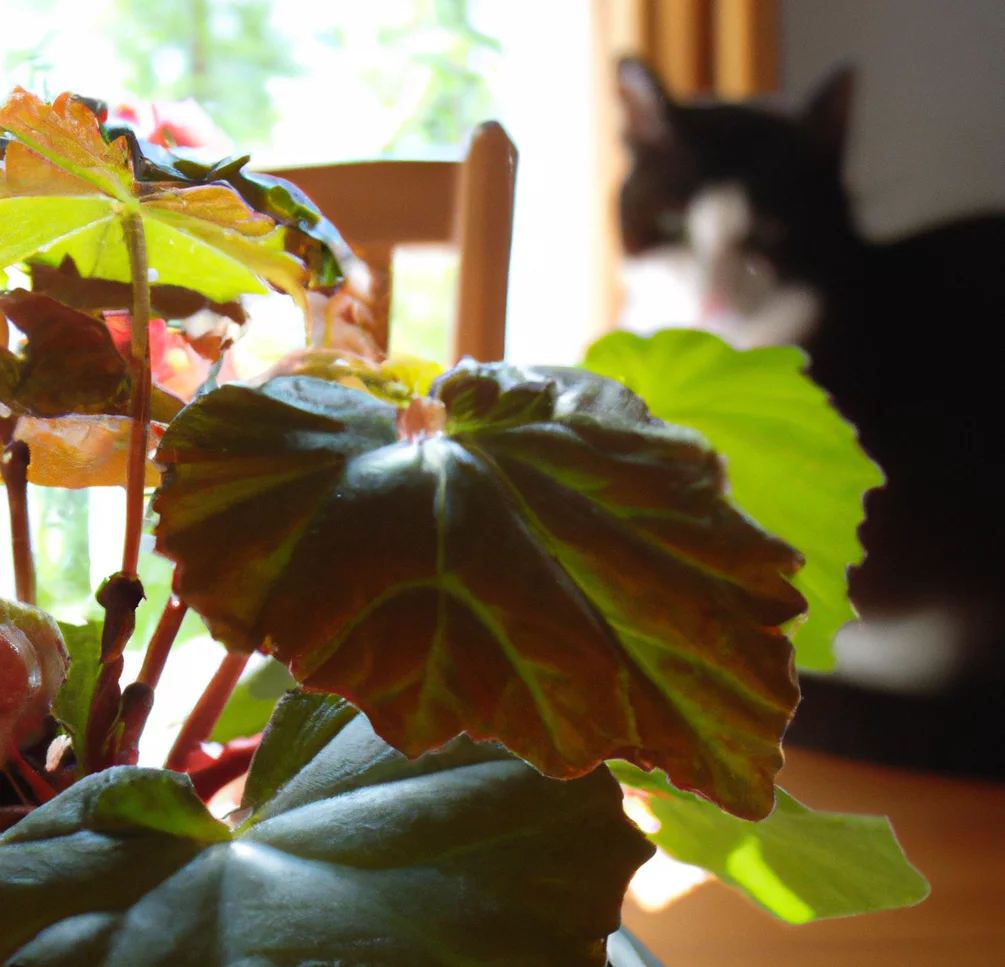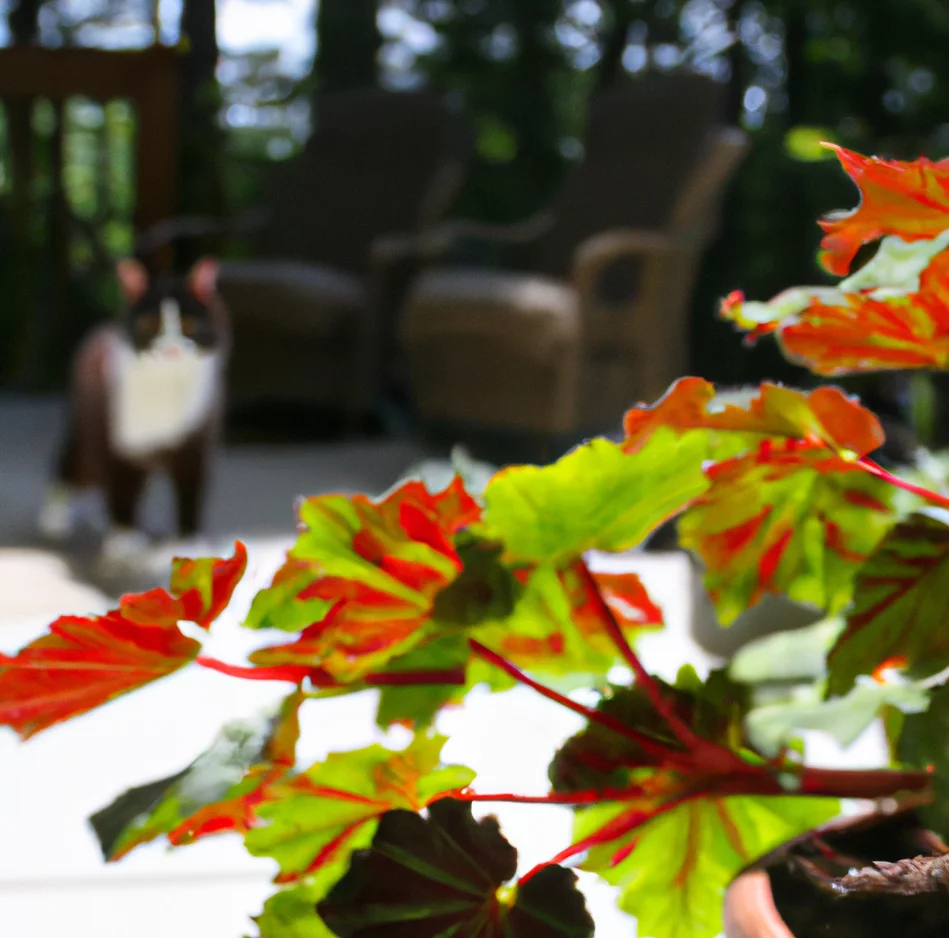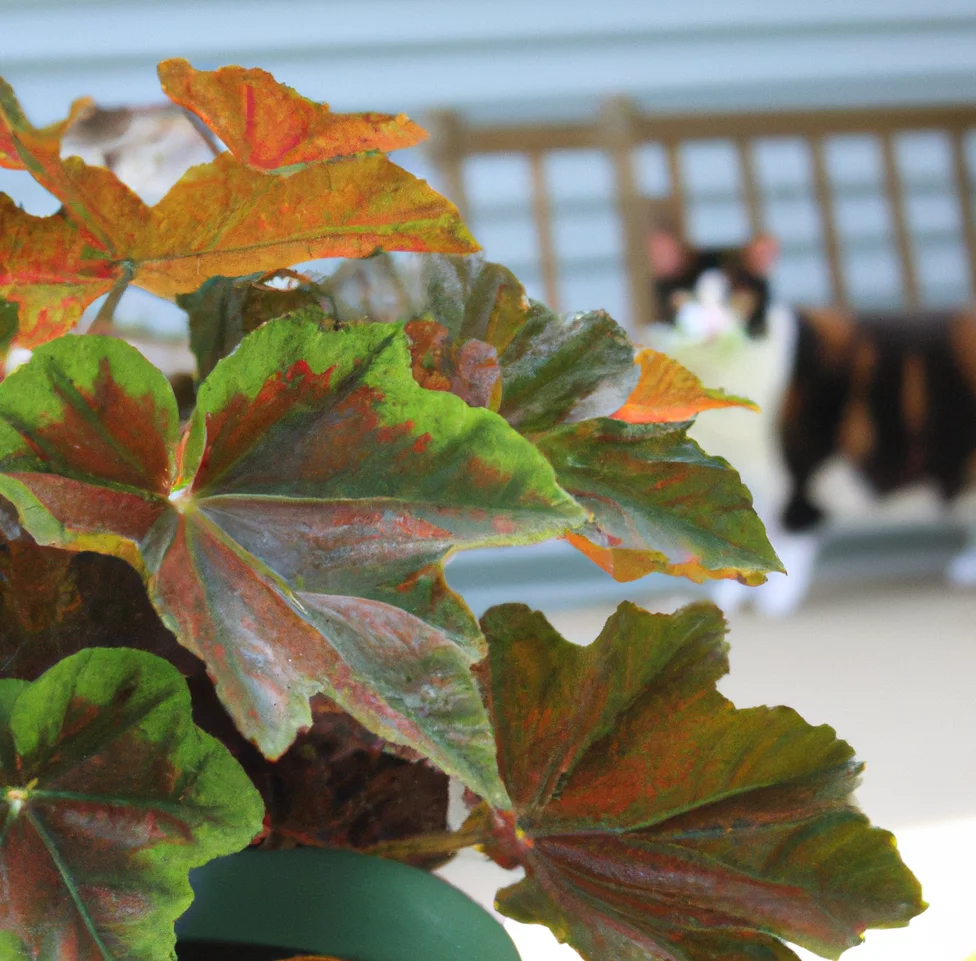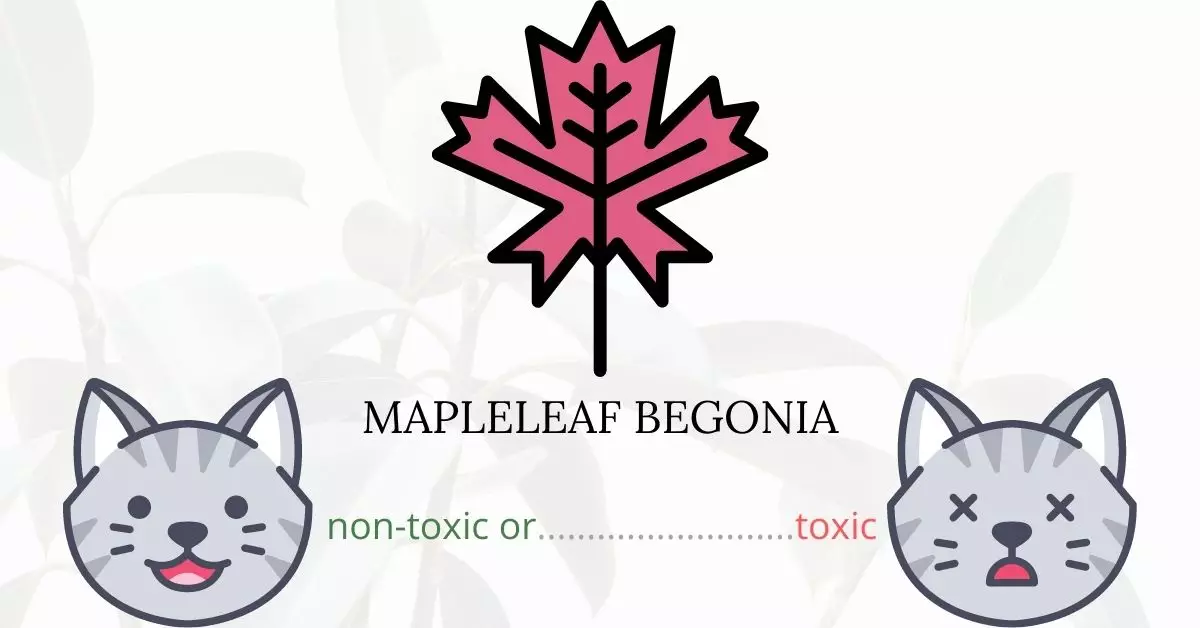Yes, Mapleleaf Begonia is toxic to cats.
Written in collaboration with a team of experienced DVMs (doctors of veterinary medicine), this article aims to provide accurate and up-to-date information on the potential risks associated with the Mapleleaf Begonia and its effects on feline companions. We have also extensively researched high-authority websites such as the ASPCA and PetMD to ensure the reliability of our information.
Mapleleaf Begonia, a perennial plant favored for its ornamental beauty, contains calcium oxalates, which are detrimental to cats. If ingested, the oxalate crystals can lodge themselves in various tissues, causing significant irritation. These crystals then break down into oxalic acid. In an attempt to counteract the acid, a cat’s body will produce excessive saliva to dilute it, thereby minimizing further discomfort and damage to the digestive tract. Continued absorption of these toxins can lead to them entering the bloodstream, potentially causing harm to vital organs like the liver. Prolonged exposure to large amounts of oxalic acid can result in liver failure, posing a severe health threat or even leading to fatality.
Clinical Signs of Mapleleaf Begonia Poisoning in Cats

Mapleleaf Begonia poses a significant risk to cats when ingested, and while all parts of the plant contain toxins, the bulbs have the highest concentration. Understanding the clinical signs of poisoning is crucial for timely intervention and treatment. Here are the signs explained:
- Excessive Drooling: This is a common initial reaction as the cat’s body instinctively produces more saliva to dilute the oxalic acid from the plant, attempting to minimize discomfort and further harm to the digestive tract.
- Oral Irritation: The calcium oxalates found in the Mapleleaf Begonia can cause a burning sensation or irritation when they come in contact with the soft tissues inside the mouth.
- Swelling of the Mouth and Tongue: Direct contact with the plant’s toxins can lead to inflammatory responses, causing swelling in the mouth and tongue as the body tries to combat the foreign substance.
- Pawing at the Mouth: This behavior may indicate a cat’s attempt to relieve oral discomfort or to remove any remnants of the plant from their mouth.
- Vomiting: The body might try to expel the ingested toxins, leading to vomiting. This is a sign that the digestive system is in distress.
- Inability to Swallow: The swelling and irritation in the mouth and throat can make it challenging for the cat to swallow.
- Loss of Appetite: A cat may avoid eating due to the pain and discomfort caused by the irritation in its mouth and throat.
- Kidney Failure: Over time, if toxins are consistently absorbed into the bloodstream, they can damage vital organs like the kidneys. This is a severe consequence and indicates that the poisoning has reached a critical level.
Cat owners should be vigilant and seek immediate veterinary care if they suspect their feline friend has come in contact with, smelled, or ingested the Mapleleaf Begonia plant.
First Aid and Treatment of Mapleleaf Begonia Poisoning in Cats

Veterinary treatment for plant poisoning usually includes intravenous fluid therapy, vomit induction, and the administering of activated charcoal. Gastric lavage may be performed by the veterinarian in some situations, depending on the state of the cat. Anti-inflammatories will be recommended if there is swelling in the cat’s throat, in order to minimize the edema and maintain a clean airway. If your cat needs it, the vet may prescribe more medicines o perform other procedures.
Recovery from Mapleleaf Begonia Poisoning in Cats

Because oxalate crystals lose their effectiveness quickly, the quantities of oxalic acid in the cat’s body will swiftly decline if they are not consumed. The complete recovery time for a severe case of mapleleaf begonia poisoning is usually quite brief, with most cases being resolved in less than two weeks at most and no need for follow-up sessions.
Prevention of Mapleleaf Begonia Poisoning in Cats
Mapleleaf begonias are not recommended to be grown in households with cats living in it. These plants should be removed immediately to prevent another incident poisoning. If your neighbor happens to grow a mapleleaf begonia and other toxic plants that can harm your cats, the best way to keep them safe is to make them stay indoors and do not let them stray away from your house.
If you love plants but have cats at home, check out these lists:





